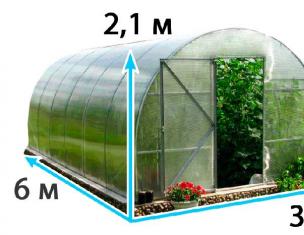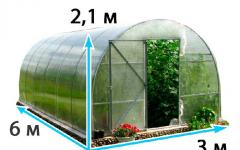We build an economical house with our own hands - what you need to know and which project to choose for construction
There are many reasons to conserve energy. But for those building their own home, two are especially important. First, money: the cost of paying for the energy used will be less. And secondly... also money: if you ever have to sell a house, the price of an energy-efficient facility will be much higher.
How much does oil cost - the main source of energy? In the 60s of the last century, a barrel (159 liters) of oil cost about 6 USD. e. During the first energy crisis, in the early 70s of the XX century, its price increased to 20 c.u. e., and in 2010 it reached 85 c.u. e., and this is not the limit. A household appliances more and more in modern homes, and, like heating, it requires a lot of energy. There is only one thing left: save money. And for this you need to buy devices with low electricity consumption and build energy-efficient homes.
Energy efficient houses by 15% expensive in construction, but by 60-70% cheaper in operation.
Health care is no less important, and it directly depends on the state of the environment in which we live. Limiting energy consumption can reduce the amount harmful substances entering the atmosphere. Especially fossils, the burning of which causes pollution environment. Now the flora is dying from the so-called acid rain. Pollution of air and surface waters leads to the disappearance of fauna in water bodies. And people develop allergic diseases, diseases of the skin and digestive tract. Many mistakenly think that we ourselves can do nothing to change the situation. However, it is not.
What is the main energy used in the home?
Each of us individually is unlikely to affect the production of electricity or the use of ecological fuel in cars, but choosing an economical heating system and installing devices with low energy consumption (special light bulbs, LCD TVs, etc.) in our own home is quite in our forces.
In an average house, electricity is spent mainly on:
- heating;
- water heating;
- cooking food;
- lighting;
- operation of electrical appliances.
The lion's share of these costs (about 72% of the total) is heating, because millions of houses built decades ago do not have adequate thermal insulation. For comparison: in the 15 developed countries of the European Union, only 57% of all energy used is for residential heating. But even this figure is too high compared to the standard of the International Energy Agency.
Energy standards of houses: what is it
Serious attention was paid to energy efficient construction only at the turn of the 1980s and 1990s. The pioneers in this area were Germany, Switzerland, Sweden, Austria and France. It was in these countries that they were the first to understand that significant energy costs are caused not only by insufficient external insulation, but also by the wrong orientation of houses to the cardinal points, complex shape structures, low efficiency of heating systems, etc. It is worth eliminating these imperfections - and you can save a lot. A house built in accordance with the new standards will require 10 times less electricity for heating alone than buildings that were erected before. By the way, energy-efficient buildings are divided into several types.
energy efficient house- this is a house that consumes no more than 70% of electricity compared to a standard one (built in compliance with familiar norms). At the same time, sources that can be renewed (the heat of the sun and the earth, the force of the wind) are used to cover part of the energy costs.
House with low, economical energy consumption is a house, the maintenance of which, compared to a standard building, requires no more than 45% of energy (thermal insulation thickness 20 cm + mechanical ventilation + additional heat source (for example, a solar collector).
passive house is a house with extremely low electricity consumption: a maximum of 30% compared to the standard. It is this type of building that will become mandatory in the European Union from 2015. Such a low energy consumption in passive houses is possible due to the excellent insulation of all external walls, windows and doors, the elimination of cold bridges (see glossary), the use of natural heat sources (people, lighting and electrical appliances), as well as obtaining a significant amount of heat from the ventilation system, which is key element such a building. Thermal insulation thickness 30 cm + mechanical ventilation + additional heat source (e.g. solar collector) + wind farm).
Zero energy house is an experimental house that does not use conventional sources of electricity at all. Not for heating, not for lighting, not even for the operation of electrical appliances. Moreover, houses have appeared that can generate electricity, and supply its surplus to the general network. But for now, these ultra-modern technologies are too expensive, and their use is not economically justified (Zero electricity house - thermal insulation thickness 40 cm + mechanical ventilation + additional heat source (for example, a solar collector) + wind farm + water tank as a heat accumulator).
Heat: how to calculate a sufficient minimum
Since most of the electricity is spent on heating, to determine the energy standard of a house, in particular in European countries, the so-called seasonal heat demand coefficient (E) is used. It describes the amount of heat needed to heat 1 m2 or 1 m3 (depending on needs) during the year. The value of E depends on several parameters, firstly, on the quality of the insulation of walls, windows, doors, roofs and floors on the ground, secondly, on the ventilation system used (gravitational, mechanical, air conditioning), thirdly, on solar radiation, that is, on the orientation of the building to the cardinal points, fourthly, on household heat, which, in turn, depends on the number of people living in the house and on the type of devices that generate heat.
Naturally, each indicator should have a certain reference point. The limit values depend on the normalized coefficient of seasonal heat consumption for heating, E0. It determines the amount of heat required to heat a unit surface or cubic volume, provided that all building codes and rules (for example, the coefficient of resistance to heat transfer of external walls and window joinery 0 = 2 or 2.6 m2 * 0C / W, etc.). The value of E0 is calculated on the basis of the shape factor of the house, expressed by the ratio A / V (where, A is the area of the external walls of the heated premises, and V is the cubic capacity of the heated part of the house). For buildings with a floor height of up to 2.9 m, E0 = 91-125 kW / m2 / h.
It should be noted that many houses under construction do not meet the accepted criteria. This is mainly due to the complexity of the configurations (plans) of buildings, their incorrect orientation to the cardinal points, the abundance of cold bridges, as well as mistakes made during construction.
Is energy efficient construction economical?
For many reasons, this question can be answered in the affirmative. First of all, we must remember that the standards for thermal protection of houses adopted in our country are much lower than in other countries with a similar climate.
This means that building codes are not keeping up with progress in construction and are not keeping pace with rising electricity prices.
In addition, investors benefit from the construction of houses that meet as much as possible high standards use of electricity, because the increase in costs in this case can be quickly compensated.
For example, it is currently believed that the cost of building a passive house is 15-25% higher than the cost of building a standard building.
But in a few years this difference will be less than 10%. So it was in Germany. Back in the mid-90s of the last century, passive houses were 30% more expensive than standard ones, but now the difference between them is hardly 8% of construction costs. Attention should also be paid to how the benefits of investing in energy efficient and passive houses are commensurate. To do this, consider the following example. Take for comparison a typical modern house for one family with an area of 150 m2, heated by gas. The structure of expenses for the operation of such an object is standard, that is:
- 144 kW / m2 h is spent on heating the house;
- for water heating - 30 kW/m2/h;
- for cooking, lighting and operation of electrical appliances - 26 kW / m2 h;
This means that the annual cost of maintaining such a house is 30 thousand kW of electricity (200 kW / m2 / h). And now let's see what will change if the energy-saving standard is applied:
- 44 kW / m2 / h is spent on heating the house;
- for water heating, as before, - 30 kW / m2 h;
- for cooking, lighting and operation of electrical appliances, as before, - 26 kW / m2 h;
When operating an energy-saving house, the amount of electricity used is reduced by half, to 15 thousand kW. This means that by modernizing a house, you can save up to 48% on its maintenance. Based on this example, you can calculate for your own home.
Glazing area to save energy
Large areas of glazing are in fashion, but so far there are no such window structures that would have thermal protection close to the walls. The thermal protection of even the warmest and highest quality windows will be several times lower than that of wall structures that comply with building codes. Therefore, heat loss with large glazing will certainly increase. In terms of illumination and the amount of heat loss, the ratio of the floor area of the living space to the area of \u200b\u200bwindows from 8: 1 to 5: 1 is considered optimal. That is, for a room of 20 m2, the optimal glazing area is 2.5-4 m2. The larger the area of glazing that you want to install in your home, the more you will have to spend on heating.
Variant of the project of the house from the catalog
Studies have shown that in Europe about 80% of private houses are built on low cost projects from directories. The question arises: is it possible to build an energy-efficient house in the same way? Yes, and we will advise you on how to choose a good project
The main task modern construction- Minimize the consumption of electricity in the house. First of all, this concerns the energy needed to heat it in winter period. It must be remembered that, in itself, an increase in the thickness of the wall insulation layer from the standard 10-12 cm indicated in the catalog to 18-20 cm will not make the house energy efficient. It is equally important to exclude all cold bridges and ensure the complete tightness of the building. In addition, a prerequisite for maximum energy savings is a mechanical ventilation system with heat production.
Walls, roof and joints
Before you buy finished project, you need to consider the details (if they are drawn) and check whether the constant thickness and continuity of thermal insulation are observed throughout the enclosing structures, how the joinery is connected to the thermal insulation layer, etc. If there are obvious defects in the sketches and drawings, the house cannot be considered energy efficient.
In buildings of this type, the tightness of the building envelope is very important, which does not allow cold air to enter the premises. Not only windows and doors should be airtight, but also the walls, as well as the roof. The walls of an energy-efficient house need double-sided plastering, and the roof needs heat, wind and vapor barriers. All connections, attachment points and driven nails are covered with self-adhesive tape. And information about this should be contained in the technical documentation.
Energy efficiency in numbers - calculation
We can say that an energy-efficient house is a house that requires 30% less electricity to heat than a typical one. Until recently, the energy efficiency of buildings was characterized by the coefficient of seasonal use of thermal energy E:
- E<= 11 0 кВт/(м2 – год) - стандартный дом;
- E<= 70 кВт/(м2 – год) - энергоэффективный дом;
- E<= 15 кВт/(м2-год) - пассивный дом.
The value of the coefficient E depended not only on the ratio of all external surfaces to the cubature of the building, but also on the thermal insulation of walls, windows, doors, roofs, floors, etc., on the ventilation system, the dimensions of glazed surfaces and their orientation to the cardinal points, as well as from the number of people living in Loma. Now, the belonging of buildings to a certain energy class in Europe is determined using a more accurate coefficient EP. Its value depends on the amount of electricity needed for space heating, ventilation, water heating, air conditioning and lighting.
An exemplary house (taken as a reference point) corresponds to EP = 1 and energy class D (standard). Values inherent in other classes are reflected in the table.
House classification
- EP<= 0,25 - класс А (пассивный);
- 0.26 < ЕР <= 0,50 - класс В (экономный);
- 0,51 < ЕР <= 0,75 - класс С (энергосберегающий);
- 0,75 < ЕР <= 1 - класс D (стандартный);
- 1,01< ЕР <= 1.25 - класс Е;
- 1,26 < EP <= 1,50 - класс F;
- EP>1.51 - class G (the most energy-consuming).
Ventilation and heating
An energy-efficient home should have a mechanical ventilation system to generate heat. And this means that when choosing a building from the catalog, you need to see if there are chimneys on the plan. If only gravitational, that is, natural, ventilation channels are indicated on the diagram, this usually disqualifies the project as energy efficient. Although in some cases, it is possible to make a fireplace even in a passive house (with a closed combustion chamber and a device that conducts outside air directly to the fire). But with a full-fledged chimney, there are much more opportunities for the competent organization of ventilation and heating.
Why is it important? For at least two reasons. Firstly, gravity ventilation does not work in a sealed house (which is exactly what an energy efficient house should be). Secondly, it works well only in a small temperature range (at temperatures slightly above 0°C). In summer, when the outside air temperature exceeds 12-14°C, it practically does not work, therefore, in order for fresh air to enter the building, windows must be opened. In winter, its efficiency is higher than necessary. Obviously, gravity ventilation is not suitable for an energy efficient building, as it leads to significant and uncontrolled losses of thermal energy.
A sealed, well-insulated, energy-efficient house should have a ventilation system with an air recuperator. It will allow you to get up to 60-90% of the heat from the exhaust air, which is equivalent to a reduction in heating costs by an average of 25-40%. Installation of mechanical ventilation with heat recovery has another advantage: it allows you to abandon the traditional gas or coal-fired water heating system, saving on batteries, pipes, boilers, etc. It is enough to supplement the ventilation system with a ground heat exchanger.
What else to remember
When planning to build an energy-efficient house, it is necessary to take into account the number of people who will live in it. This is important, because a significant part of the energy balance is the so-called domestic heat created by Humans, released during cooking, washing, using a computer, etc. It follows from this that it is unprofitable to build an oversized house. If a building is designed for 6 people and only 2 people live in it, it will not meet the energy efficiency standard. It is necessary to pay attention to the fact that all devices in the house consume as little electricity as possible. This applies to both lighting (for example, using energy-saving light bulbs instead of conventional ones) and household appliances.
In addition, it is necessary to properly plan the site. First of all, you should clearly orient the house to the cardinal points and take into account local conditions (you will not find such a binding in the project from the catalog). All recesses, slopes of the soil, trees growing on the site can and should be used to save electricity. But, unfortunately, this is only possible when developing individual projects.
The foregoing is an important clue for owners who are going to build up a non-standard territory. After all, typical projects are designed for flat and empty areas.
Brief summary of the project.
The main characteristics of an energy efficient home:
- low energy consumption due to the peculiarities of planning solutions and materials from which the house is built;
- maximum use of climatic and natural conditions;
- orientation towards renewable resources.
The main tasks of designing an energy efficient house:
- maximum use of natural resources for energy supply at home;
- prevention of heat losses and search for the most profitable options for using the accumulated energy.
Components of the right project
The main indicator of the energy efficiency of the house is the energy consumption for heating. Therefore, if you decide to build an energy-efficient house and at the same time avoid irreparable mistakes, you need the right project, which will include:
- simple, compact form of the house and roof;
- warm and environmentally friendly
- Construction Materials;
- complex and reinforced thermal insulation for increased tightness of the house;
- supply and exhaust ventilation with heat recovery;
- installations using energy from renewable sources;
- system of economical power consumption and heating;
- well-designed shading elements for windows;
- south orientation and presence of buffer zones.
And it is desirable that all engineering equipment planned for use in the project could work autonomously.
WHICH AND HOW TO CHOOSE A PROJECT
- Currently, the projects of houses with a total footage of 170 to 230 m2 are in the greatest demand.
- Changing the project for a different wall material (for example, replacing the designed foam concrete with a brick) significantly increases its cost.
- The cost of building a house is usually distributed in the following proportions: 60% - materials, 40% - work.
Below are other entries on the topic "How to do it yourself - to the householder!"
We build an economical house with our own hands - what you need to know and which project to choose for construction
There are many reasons to conserve energy. But for those building their own home, two are especially important. First, money: the cost of paying for the energy used will be less. And secondly... also money: if you ever have to sell a house, the price of an energy-efficient facility will be much higher.
How much does oil cost - the main source of energy? In the 60s of the last century, a barrel (159 liters) of oil cost about 6 USD. e. During the first energy crisis, in the early 70s of the XX century, its price increased to 20 c.u. e., and in 2010 it reached 85 c.u. e., and this is not the limit. And there are more and more household appliances in modern homes, and, like heating, it requires a lot of energy. There is only one thing left: save money. And for this you need to buy devices with low electricity consumption and build energy-efficient homes.
Energy efficient houses are 15% more expensive to build, but 60-70% cheaper to operate.
Health care is no less important, and it directly depends on the state of the environment in which we live. Limiting energy consumption can reduce the amount of harmful substances released into the atmosphere. Especially fossils, the burning of which causes environmental pollution. Now the flora is dying from the so-called acid rain. Pollution of air and surface waters leads to the disappearance of fauna in water bodies. And people develop allergic diseases, diseases of the skin and digestive tract. Many mistakenly think that we ourselves can do nothing to change the situation. However, it is not.
What is the main energy used in the home?
Each of us individually is unlikely to affect the production of electricity or the use of ecological fuel in cars, but choosing an economical heating system and installing devices with low energy consumption (special light bulbs, LCD TVs, etc.) in our own home is quite in our forces.
In an average house, electricity is spent mainly on:
- heating;
- water heating;
- cooking food;
- lighting;
- operation of electrical appliances.
Energy standards of houses: what is it
Serious attention was paid to energy efficient construction only at the turn of the 1980s and 1990s. The pioneers in this area were Germany, Switzerland, Sweden, Austria and France. It was in these countries that they were the first to understand that significant energy costs were caused not only by insufficient external insulation, but also by the wrong orientation of houses to the cardinal points, the complex shape of buildings, the low efficiency of heating systems, etc. It is worth eliminating these shortcomings - and you can save a lot. A house built in accordance with the new standards will require 10 times less electricity for heating alone than buildings that were erected before. By the way, energy-efficient buildings are divided into several types.
An energy-efficient house is a house that consumes no more than 70% of electricity compared to a standard house (built in compliance with familiar norms). At the same time, sources that can be renewed (the heat of the sun and the earth, the force of the wind) are used to cover part of the energy costs.
A house with a low, economical energy consumption is a house, the maintenance of which, compared to a standard building, requires no more than 45% of energy (thermal insulation thickness 20 cm + mechanical ventilation + additional heat source (for example, a solar collector).
A passive house is a house with extremely low electricity consumption: a maximum of 30% compared to a standard one. It is this type of building that will become mandatory in the European Union from 2015. Such a low energy consumption in passive houses is possible due to the excellent insulation of all external walls, windows and doors, the elimination of cold bridges (see glossary), the use of natural heat sources (people, lighting and electrical appliances), as well as obtaining a significant amount of heat from the ventilation system, which is a key element of such a structure. Thermal insulation thickness 30 cm + mechanical ventilation + additional heat source (e.g. solar collector) + wind farm).
A zero energy house is an experimental house that does not use conventional sources of electricity at all. Not for heating, not for lighting, not even for the operation of electrical appliances. Moreover, houses have appeared that can generate electricity, and supply its surplus to the general network. But for now, these ultra-modern technologies are too expensive, and their use is not economically justified (House with zero electricity consumption - thermal insulation thickness 40 cm + mechanical ventilation + additional heat source (for example, a solar collector) + wind farm + water tank as a heat accumulator) .
Since most of the electricity is spent on heating, to determine the energy standard of a house, in particular in European countries, the so-called seasonal heat demand coefficient (E) is used. It describes the amount of heat needed to heat 1 m2 or 1 m3 (depending on needs) during the year. The value of E depends on several parameters, firstly, on the quality of the insulation of walls, windows, doors, roofs and floors on the ground, secondly, on the ventilation system used (gravitational, mechanical, air conditioning), thirdly, on solar radiation, that is, on the orientation of the building to the cardinal points, fourthly, on household heat, which, in turn, depends on the number of people living in the house and on the type of devices that generate heat.
Naturally, each indicator should have a certain reference point. The limit values depend on the normalized coefficient of seasonal heat consumption for heating, E0. It determines the amount of heat required to heat a unit surface or cubic volume, provided that all building codes and regulations are observed (for example, the heat transfer resistance coefficient of external walls and window joinery 0 \u003d 2 or 2.6 m2 * 0C / W, etc. .). The value of E0 is calculated on the basis of the shape factor of the house, expressed by the ratio A / V (where, A is the area of the external walls of the heated premises, and V is the cubic capacity of the heated part of the house). For buildings with a floor height of up to 2.9 m, E0 = 91-125 kW / m2 / h.
It should be noted that many houses under construction do not meet the accepted criteria. This is mainly due to the complexity of the configurations (plans) of buildings, their incorrect orientation to the cardinal points, the abundance of cold bridges, as well as mistakes made during construction.
Is energy efficient construction economical?
For many reasons, this question can be answered in the affirmative. First of all, we must remember that the standards for thermal protection of houses adopted in our country are much lower than in other countries with a similar climate. This means that building codes are not keeping up with progress in construction and are not keeping pace with rising electricity prices. In addition, investors benefit from building houses that meet the highest possible standards of energy use, because the increase in costs in this case can be quickly compensated. For example, it is currently believed that the cost of building a passive house is 15-25% higher than the cost of building a standard building. But in a few years this difference will be less than 10%. So it was in Germany. Back in the mid-90s of the last century, passive houses were 30% more expensive than standard ones, but now the difference between them is hardly 8% of construction costs. Attention should also be paid to how the benefits of investing in energy efficient and passive houses are commensurate. To do this, consider the following example. Take for comparison a typical modern single-family house of 150 m2, heated by gas. The structure of expenses for the operation of such an object is standard, that is:
144 kW / m2 h is spent on heating the house;
for water heating - 30 kW/m2/h;
for cooking, lighting and operation of electrical appliances - 26 kW / m2 h;
This means that the annual cost of maintaining such a house is 30 thousand kW of electricity (200 kW / m2 / h). And now let's see what will change if the energy-saving standard is applied:
44 kW / m2 / h is spent on heating the house;
for water heating, as before, - 30 kW / m2 h;
for cooking, lighting and operation of electrical appliances, as before, - 26 kW / m2 h;
When operating an energy-saving house, the amount of electricity used is reduced by half, to 15 thousand kW. This means that by modernizing a house, you can save up to 48% on its maintenance. Based on this example, you can calculate for your own home.
Glazing area to save energy
Large areas of glazing are in fashion, but so far there are no such window structures that would have thermal protection close to the walls. The thermal protection of even the warmest and highest quality windows will be several times lower than that of wall structures that comply with building codes. Therefore, heat loss with large glazing will certainly increase. In terms of illumination and the amount of heat loss, the ratio of the floor area of the living space to the area of \u200b\u200bwindows from 8: 1 to 5: 1 is considered optimal. That is, for a room of 20 m2, the optimal glazing area is 2.5-4 m2. The larger the area of glazing that you want to install in your home, the more you will have to spend on heating.
Variant of the project of the house from the catalog
Studies have shown that in Europe about 80% of private houses are built according to inexpensive projects from catalogs. The question arises: is it possible to build an energy-efficient house in the same way? Yes, and we will advise you on how to choose a good project
The main task of modern construction is to minimize the consumption of electricity in the house. First of all, this concerns the energy needed to heat it in the winter. It must be remembered that, in itself, an increase in the thickness of the wall insulation layer from the standard 10-12 cm indicated in the catalog to 18-20 cm will not make the house energy efficient. It is equally important to exclude all cold bridges and ensure the complete tightness of the building. In addition, a prerequisite for maximum energy savings is a mechanical ventilation system with heat production.
Walls, roof and joints
Before buying a finished project, you need to consider the details (if they are drawn) and check whether the constant thickness and continuity of thermal insulation are observed throughout the building envelope, how the joinery is connected to the thermal insulation layer, etc. If there are obvious defects in the sketches and drawings, the house cannot be considered energy efficient.
In buildings of this type, the tightness of the building envelope is very important, which does not allow cold air to enter the premises. Not only windows and doors should be airtight, but also the walls, as well as the roof. The walls of an energy-efficient house need double-sided plastering, and the roof needs heat, wind and vapor barriers. All connections, attachment points and driven nails are covered with self-adhesive tape. And information about this should be contained in the technical documentation.
Energy efficiency in numbers - calculation
We can say that an energy-efficient house is a house that requires 30% less electricity to heat than a typical one. Until recently, the energy efficiency of buildings was characterized by the coefficient of seasonal use of thermal energy E:
E<= 11 0 кВт/(м2 - год) - стандартный дом;
E<= 70 кВт/(м2 - год) - энергоэффективный дом;
E<= 15 кВт/(м2-год) - пассивный дом.
The value of the coefficient E depended not only on the ratio of all external surfaces to the cubature of the building, but also on the thermal insulation of walls, windows, doors, roofs, floors, etc., on the ventilation system, the dimensions of glazed surfaces and their orientation to the cardinal points, as well as from the number of people living in Loma. Now, the belonging of buildings to a certain energy class in Europe is determined using a more accurate coefficient EP. Its value depends on the amount of electricity needed for space heating, ventilation, water heating, air conditioning and lighting.
An exemplary house (taken as a reference point) corresponds to EP = 1 and energy class D (standard). Values inherent in other classes are reflected in the table.
House classification
EP<= 0,25 - класс А (пассивный);
0.26 < ЕР <= 0,50 - класс В (экономный);
0,51 < ЕР <= 0,75 - класс С (энергосберегающий);
0,75 < ЕР <= 1 - класс D (стандартный);
1,01< ЕР <= 1.25 - класс Е;
1,26 < EP <= 1,50 - класс F;
EP>1.51 - class G (the most energy-consuming)
Ventilation and heating
An energy-efficient home should have a mechanical ventilation system to generate heat. And this means that when choosing a building from the catalog, you need to see if there are chimneys on the plan. If only gravitational, that is, natural, ventilation channels are indicated on the diagram, this usually disqualifies the project as energy efficient. Although in some cases, it is possible to make a fireplace even in a passive house (with a closed combustion chamber and a device that conducts outside air directly to the fire). But with a full-fledged chimney, there are much more opportunities for the competent organization of ventilation and heating.
Why is it important? For at least two reasons. Firstly, gravity ventilation does not work in a sealed house (which is exactly what an energy efficient house should be). Secondly, it works well only in a small temperature range (at temperatures slightly above 0°C). In summer, when the outside air temperature exceeds 12-14°C, it practically does not work, therefore, in order for fresh air to enter the building, windows must be opened. In winter, its efficiency is higher than necessary. Obviously, gravity ventilation is not suitable for an energy efficient building, as it leads to significant and uncontrolled losses of thermal energy.
A sealed, well-insulated, energy-efficient house should have a ventilation system with an air recuperator. It will allow you to get up to 60-90% of the heat from the exhaust air, which is equivalent to a reduction in heating costs by an average of 25-40%. Installation of mechanical ventilation with heat recovery has another advantage: it allows you to abandon the traditional gas or coal-fired water heating system, saving on batteries, pipes, boilers, etc. It is enough to supplement the ventilation system with a ground heat exchanger.
What else to remember
When planning to build an energy-efficient house, it is necessary to take into account the number of people who will live in it. This is important, because a significant part of the energy balance is the so-called domestic heat created by Humans, released during cooking, washing, using a computer, etc. It follows from this that it is unprofitable to build an oversized house. If a building is designed for 6 people and only 2 people live in it, it will not meet the energy efficiency standard. It is necessary to pay attention to the fact that all devices in the house consume as little electricity as possible. This applies to both lighting (for example, using energy-saving light bulbs instead of conventional ones) and household appliances.
In addition, it is necessary to properly plan the site. First of all, you should clearly orient the house to the cardinal points and take into account local conditions (you will not find such a binding in the project from the catalog). All recesses, slopes of the soil, trees growing on the site can and should be used to save electricity. But, unfortunately, this is only possible when developing individual projects.
The foregoing is an important clue for owners who are going to build up a non-standard territory. After all, typical projects are designed for flat and empty areas.
Brief summary of the project.
The main characteristics of an energy efficient home:
low energy consumption due to the peculiarities of planning solutions and materials from which the house is built;
maximum use of climatic and natural conditions;
orientation towards renewable resources.
The main tasks of designing an energy efficient house:
maximum use of natural resources for energy supply at home;
prevention of heat losses and search for the most profitable options for using the accumulated energy.
Components of the right project
The main indicator of the energy efficiency of the house is the energy consumption for heating. Therefore, if you decide to build an energy-efficient house and at the same time avoid irreparable mistakes, you need the right project, which will include:
simple, compact form of the house and roof;
warm and environmentally friendly
Construction Materials;
complex and reinforced thermal insulation for increased tightness of the house;
supply and exhaust ventilation with heat recovery;
installations using energy from renewable sources;
system of economical power consumption and heating;
well-designed shading elements for windows;
south orientation and presence of buffer zones.
And it is desirable that all engineering equipment planned for use in the project could work autonomously.
WHICH AND HOW TO CHOOSE A PROJECT
Currently, the projects of houses with a total footage of 170 to 230 m2 are in the greatest demand.
Changing the project for a different wall material (for example, replacing the projected one with a brick) significantly increases its cost.
The cost of building a house is usually distributed in the following proportions: 60% - materials, 40% - work.
DIY source - How to do it yourself
As you know, the construction of an individual residential building requires a huge amount of effort, time and money. The process is quite lengthy and implies constant financial costs for the purchase of a construction project, materials, rental of mechanisms, labor costs for the team and foreman. All this can make a tangible gap in the family budget. This state of affairs often stops customers from implementing the idea of construction, because no one wants to overpay. Therefore, future owners are looking for opportunities to realize their dream without being left in huge debts. Some decide to build on their own. In this situation, developers are not immune from the loss of the quality of the house, from the violation of construction technology, because they cannot take into account all the nuances.
Other developers are building large houses of complex architecture with expensive finishes. At the same time, they save on materials, workers, supervision. But all these actions are as illogical as buying a Rolls-Royce on credit and maintaining it in a neighbor's garage.
In this article, we have collected the most effective ways to save money in the construction of houses that do not affect the quality of the final product, which will help both categories of individual developers to significantly save on construction. Let's talk about them in more detail.
Stage one: land for construction
Plots of irregular shape, relief, located near ravines are cheaper, and thus attract the attention of inexperienced developers. Keep in mind that, as a rule, only non-standard house designs are suitable for such sites, the development of which costs much more than a typical cottage project.
- give preference to an even, regular shape of the site;
- and also, to acquire a plot of the required area, without overpaying for acres for the future;
- make sure you have communications.
It is forbidden:
- plan a purchase in the winter, because snow hides many surface imperfections;
- make a purchase of land with an existing foundation, since it can be built without observing the technology and is not designed for the required load. Its dismantling will require significant financial resources.
Stage two: a successful project is the key to success
Before starting construction, it is important to think through everything to the smallest detail. It is necessary to calculate the useful area of the cottage and not plan a house of impressive size, because the construction of additional squares will require a rather large amount.
- Determine the purpose of housing: seasonal or permanent;
- Consider the number and necessity of each room, its reasonable area.
- Search for a suitable project among ready-made ones, because it is more profitable than creating it from scratch according to individual wishes.
- Give preference to standard solutions, which, in addition to being cheaper, are also time-tested, exploited, do not contain errors and violations of construction technology.
Not worth:
- To carry out the selection of a house project that does not fully meet the required purpose, which has little functional premises.
- Choose projects with a complex cascading roof for use. By simplifying the design to a classic gable roof, you can reduce the cost of roofing up to two times.
Rejecting a couple of dozen squares and architectural excesses, you can significantly reduce the estimate for building a house.
.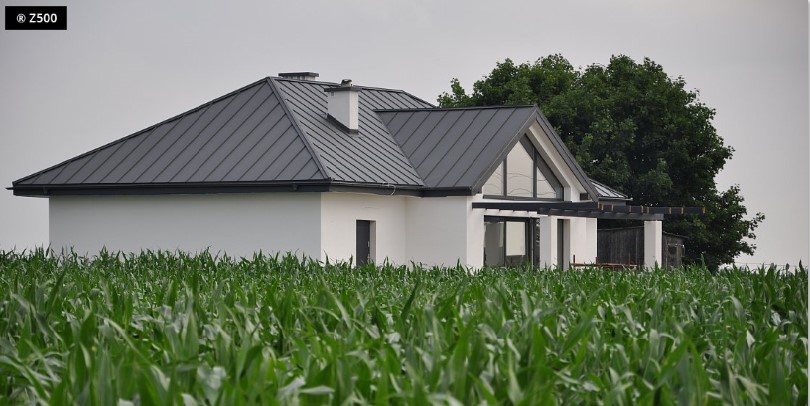
Stage three: a reliable foundation is the basis of peace
The foundation, of course, is the most important part of the structure of the cottage, and it must be reliable. But taking large stocks of thickness and strength is not effective. It is worth considering the golden mean.
- In the spring, carry out geological surveys;
- Based on the data obtained, find out which type of foundation is suitable for a given type of soil and load.
- The optimal solution for the main types of soils would be the installation of a strip foundation and the rejection of basements.
Not worth:
embody the idea of deepening the base into the ground and building a basement. This will save money on foundation material, drainage construction, and basement heating.
Thus, preliminary studies of the soil and a well-calculated foundation can provide up to 20% savings on the cost of its construction.
Stage four: bargain purchases
A large part of the benefits can be obtained by purchasing materials specified in the stock specification, preferably in the off-season. It would be best to purchase everything from one supplier, because by making a bulk order you can count on a discount and save on shipping.
Can:
- Replace the main material of the box construction. So blocks of foam and aerated concrete will come out much cheaper than brick or timber. Projects of houses from foam blocks can be found in our catalog. It is important to provide reliable waterproofing, since the porous lightweight materials of the blocks have an increased hygroscopicity.
- Provide for the construction of partitions from blocks, with any material of the outer walls, the laying of wooden floors instead of reinforced concrete.
It is forbidden:
- When replacing materials from the project specification with more economical counterparts, it is not recommended to choose cheap varieties of the same material. By holding funds for good quality aerated concrete from a trusted manufacturer, you can significantly lose the reliability of the entire structure. Projects of houses made of aerated concrete are designed for materials that have the best quality and technical indicators.
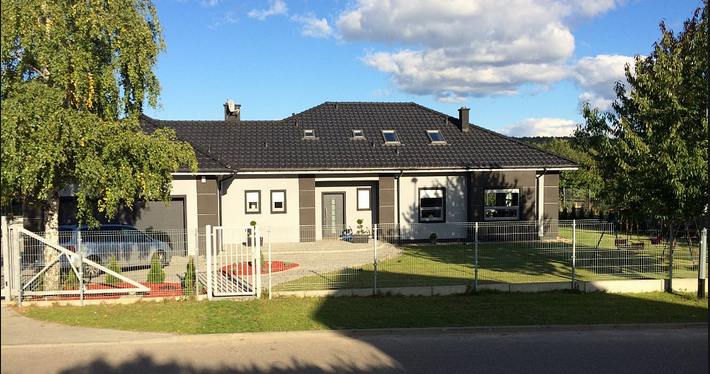
Stage five: we plan delivery
As a rule, the cost of delivery of materials is up to 20% of the price of the order itself. You can save on such a significant issue by following these recommendations:
- Choose a supplier located at a minimum distance from the construction site, avoiding manufacturers operating in another region.
- Try to plan purchases by ordering goods in large quantities in order to completely fill the volume of transport provided for delivery. This will reduce the number of trips and reduce costs.
Stage six: choose a contractor
You can build a house on your own for professional builders and people with extensive experience in this matter. In all other cases, it is better to entrust this work to hired professionals.
Can:
- Choose a company that provides a full range of services: provide a choice of projects of economical houses, perform the necessary surveys, perform a range of construction and installation works from breaking down the axes of the building to erecting the roof. This will help to avoid marriage and alterations, and in case of their occurrence, it will speed up the process. In addition, ordering large volumes in the company provides for bonuses and discounts.
- Employ different foremen for each type of construction and installation work. This will increase the risk of marriage and allow workers to avoid liability.
Stage seven: ready-made standard nodes
When implementing the projects of economy class houses, preference should be given to the installation of ready-made standard structures. Welding, assembling and manufacturing units at the construction site is a lot of labor that requires additional money.
Can:
- For low-rise houses, it is more profitable to carry out the roof structure from prefabricated trusses than to assemble a conventional truss frame on site. In doing so, customers will receive the following significant benefits:
1. Small need for materials, because for the manufacture of trusses, almost half the materials are spent than for the production of a traditional attic-rafter system. Hence the more favorable cost of farms due to its low material consumption.
2. Reduced truss installation time, taking from two to three days. As a result, savings on the wages of workers.
3. A high-quality finished truss, produced at the enterprise, does not require any modifications and immediately goes into installation. At the same time, the manufacturer guarantees its reliability with quality certificates.
4. Possibility of implementation of ceilings with a span of up to 12 meters, which is technologically impossible to realize using a truss system.
If possible not worth it:
- entrusting the assembly of typical units to workers on the site, it will cost more, moreover, they will not be able to guarantee the required quality of the design and will not give a guarantee for the work performed.
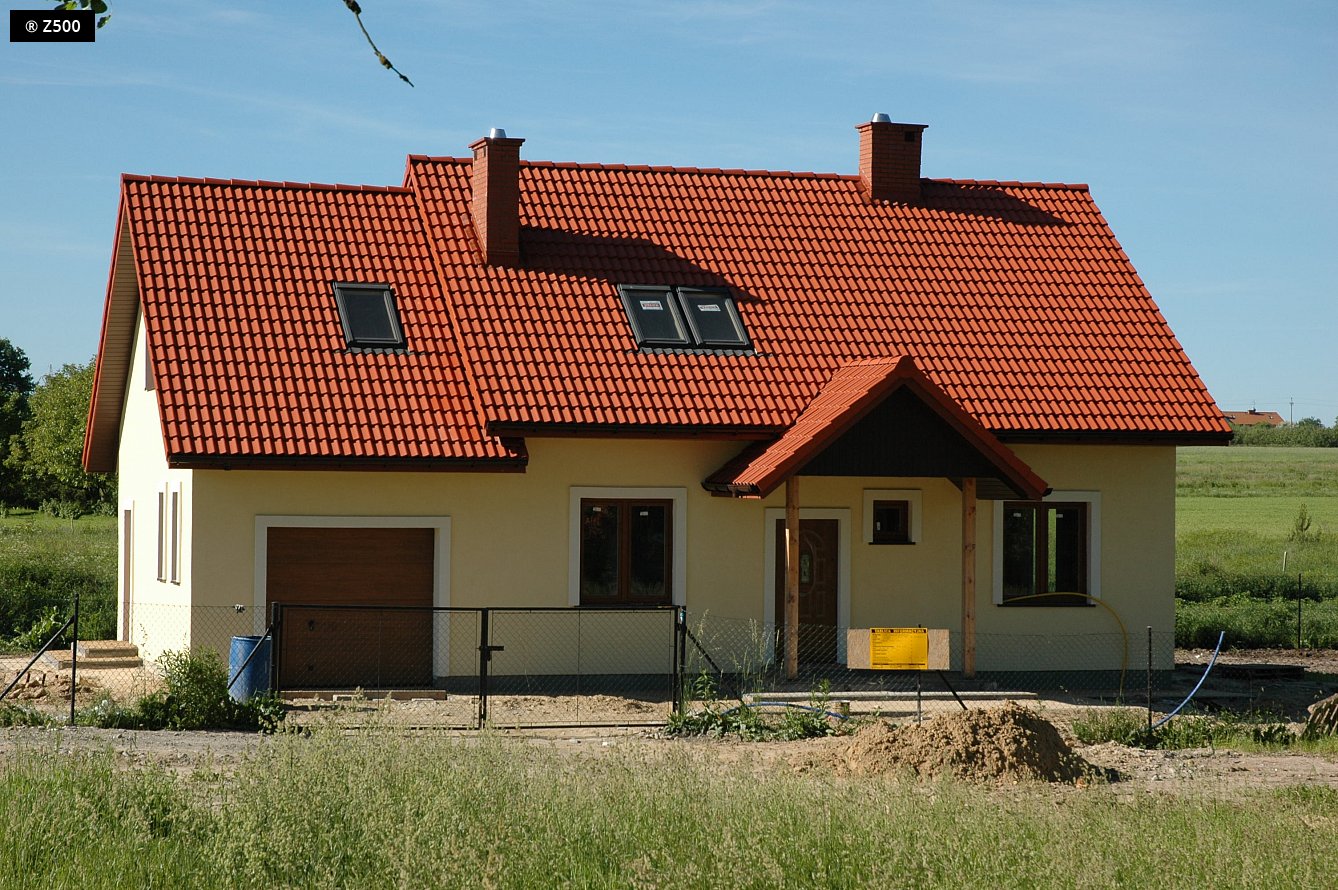
Stage eight method: savings in operation
When choosing projects of inexpensive houses, it is important to provide for their economy in future use, because the peculiarities of our climatic zone involve severe winters and hot summers, and, accordingly, expensive heating and the need for air conditioning.
Can:
- Carefully choose a project that provides for an efficient heating system and energy-saving technologies.
- Correctly choose the thickness of the insulation of the outer walls, taking into account the characteristics of the climatic zone, so that the house is warmer in winter.
- Install the following methods to reduce the energy consumption of houses in the house:
1. Systems of automatic control of heating in the house, which, in order to maintain the set parameters, choose ways to regulate the work.
2. Selection of efficient boiler equipment with the highest possible efficiency. Combination of heating and hot water circuits in one boiler.
3. Ways to save energy: a system for controlling the switching off of lighting devices based on signals from presence or motion sensors, as well as the use of energy-saving light bulbs.
The installation costs of such energy-saving systems fully pay off with the time of their use.
It is forbidden:
- Let this question take its course, as an incorrectly chosen heating system can be a big cost item.
- Fully trust your home with the modern technology of "zero home", a home that receives heat from natural sources: wind, sun, people in the room and household appliances. In our climatic conditions, such a zero house will still be cold in winter, it will have to be supported by a traditional heating system.
Step nine: save time
The construction process is associated with labor costs for workers and equipment rental. The increase in the terms of production of works entails unjustified costs.
The best thing:
- Make a schedule for the construction and installation work and strictly adhere to it.
It is forbidden:
- To allow delays in the supply of materials and downtime of the construction team. This entails additional costs.
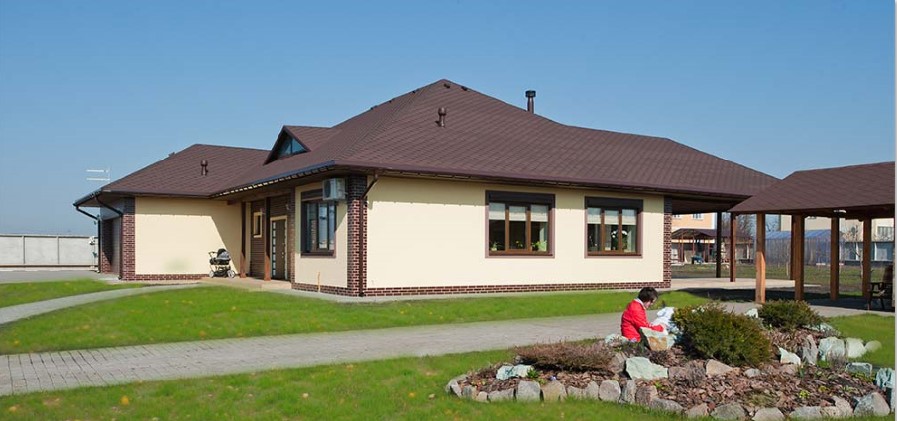
Step ten: choose the setting
As a rule, the choice of equipment, furniture and interior items for the home is an overhead task associated with large financial investments and a significant investment of time. Not everyone enjoys hours of shopping.
Can:
- Use specialized online stores to order all the necessary furnishings for your home. This will help save time and also buy goods at a reduced cost, since the seller does not include the cost of renting a showroom and paying consultants in their price.
It is forbidden:
- Order goods on the websites of little-known online stores. You should use only trusted sources that will be able to issue all the necessary documents and a manufacturer's warranty for the product.
Having considered the above ways to save money, we can conclude that it is actually possible to make your dream of building your own home come true. If you build a house according to all the rules of economy - build on a flat, clean site according to a competent economical project with an adapted foundation, with energy-efficient systems provided for in it, under the guidance of one foreman for the entire construction cycle; you can get a good quality house, and a considerable benefit by saving money!



